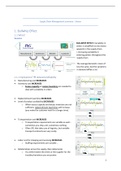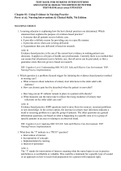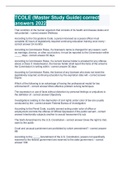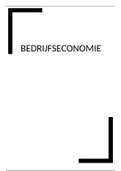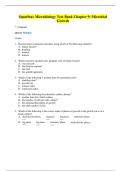Summary
Summary Supply chain management
- Course
- Institution
Full summary of all slides & notes given during the video-classes. Professor was Stefan Creemers. At the end of the document, blanco exercises are included so you can easily practice these for the exam. I had a 19/20 for this exam. So summary is very extensive and complete.
[Show more]
